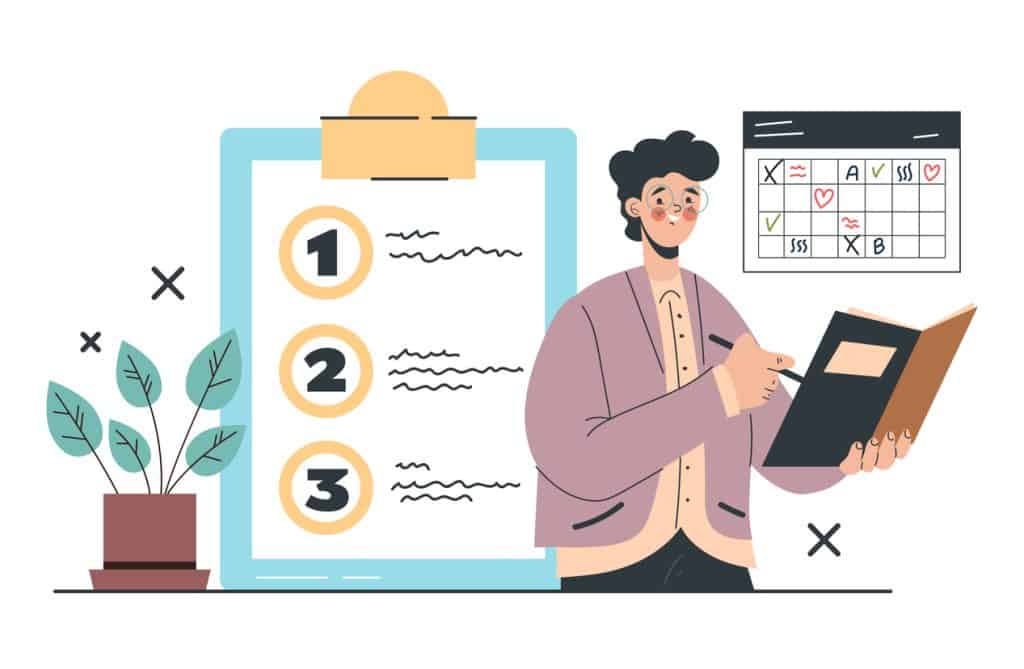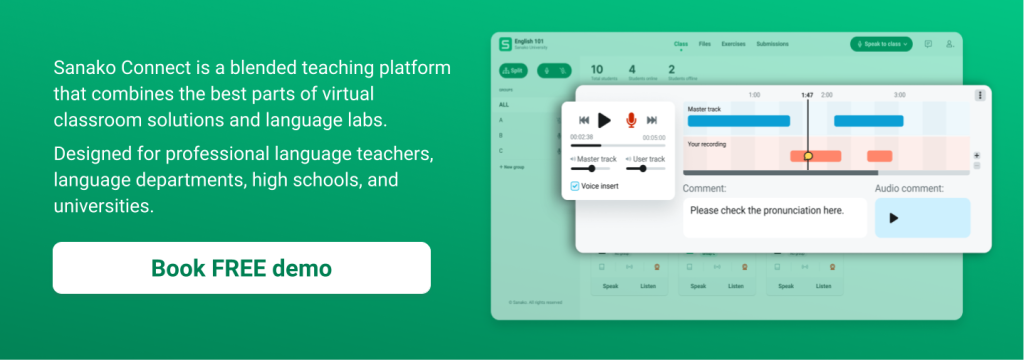There’s no one-size-fits-all approach or language teaching method in language teaching. Every language educator has their own unique approach to teaching each class and every student. For a language teaching software provider such as Sanako, it’s important that our products and solutions are highly flexible and can support the widest variety of different language teaching and learning methods.
To that end, we’ll be using this blog to highlight how Sanako’s products can be used to deliver different pedagogical approaches. This post explores how our solutions can support Task-Based Language Teaching and Learning (TBLT), which is particularly well suited to in classroom as well as to online delivery, according to feedback from educators and institutions.
What is Task-Based Language Teaching and Learning?
According to Richards and Rogers*, TBLT focuses on building communication skills through task completion. Fundamentally, this language teaching strategy recognises that language is a tool that we use to communicate in order to get things done. So TBLT focuses students on solving tasks which involve the realistic use of target language, rather than simply concentrating on grammatical and linguistic concepts or communicative functions. In TBLT students get to actively use the target language instead of being passive learners.
OK, but what is a task in TBLT?
Successful TBLT lessons require a specific kind of task – typically one that involves realistic and meaningful communication between students.
In a recent post on Sanako’s blog for language teachers, we identified three types of tasks that are commonly seen in task-based language learning. Students can choose how to complete each type of task and the language/vocabulary forms to do so. There’s also a clear goal or learning output, so students know when the task is completed.
1. Information gap tasks – such activities require students to communicate with each other to share information and broaden their understanding.
For example, Sanako Connect Virtual Classroom enables students to work in pairs from different locations to practice live conversations and other role play activities. Language teachers are easily able to collect and review students’ audio recordings and provide feedback for work in real-time or via voice recording.
2. Reasoning gap tasks are those in which students are asked to solve a problem or grasp a concept from a resource or stimulus the teacher has provided.
Through Sanako Connect, teachers can easily upload a wide variety of source material (a local language calendar or timetable, for example) and then get students to find solutions to particular problems or requests.
3. Opinion gap tasks give students the opportunity to share their own opinions or feelings about a specific situation.
Sanako Connect focuses on maximising the time students are able to actively practice their language skills during classes. The Voice Insert feature, for example, allows students to answer pre-recorded questions at their own pace alongside independent role play practice. As above, students are easily able to use Connect to record voice content, such as debating topical issues, undertaken in pairs or small groups.
In this image, you see an example TBLT task: Students are asked to record themselves giving instructions how to go from the Helsinki train station to the Kiasma Art Center.
How can you use task-based language teaching approach in your language classroom?
Sanako’s software can be hugely powerful to help language educators to differentiate their instruction when using task-based language learning activities. Organizing a course around tasks allows educators to have learners at higher proficiency levels working with learners at lower proficiency levels on the same task.
Sanako Connect not only enables educators to provide learners with stimulus materials that are relevant to their needs and their interests. It can also help them to promote cooperative language learning as students need to speak and learn with each other to successfully complete the task. Connect can also help educators to provide feedback when students need assistance with specific words or concepts.
In essence, a lesson based on the TBLT pedagogical approach typically has three stages – the Pre-Task Activity, the Task and the Wrap-up or Review.
1. The Pre-Task – Populating the session with instructions and stimulus material
This stage is vital to the overall success of any TBLT lesson. Delivered correctly, this stage enables educators to set the scene for the lesson, enthusing the students about what is to come and providing them with clear expectations and instructions.
Sanako Connect makes this easy for teachers, enabling them to circulate detailed notes and any relevant resources via the platform to all students in advance of the lesson. These instructions can be provided using a combination of multimedia such as a text, video or as a piece of audio.
2. The Task – Assigning student groups or pairs and letting them work on the task
Students can now work on the task in hand, typically in pairs or small groups. The aim for this stage is for the learners to build their fluency and the educator should only step in if students stop and don’t know how to proceed.
Educators can easily use Connect to divide students into pairs or groups for conversation practice. Each group can work/talk simultaneously without distracting each other. Teachers can listen in or talk with different groups to assist as required. They can also save time and effort by using resource templates to create tasks for students including imitation, video or gap-fill exercises.
3. The Review – Collecting students’ recordings and other completed work
Once the learners have completed their task, the final stage of the lesson is to collect and review what they have completed. In TBLT, students usually learn by doing but they should also be given the opportunity to reflect on their learning and outcomes.
By working in pairs or small groups through Sanako Connect, students are able to offer peer feedback on each other’s work. Furthermore, educators are also easily able to feedback and comment on students’ output.
Task-Based Language Teaching (TBLT) can therefore be an incredibly powerful way to engage students and to help them to achieve their learning objectives. After all, students have to communicate in order to complete the task so their interaction and engagement should come naturally as part of the lesson. Furthermore, given that the tasks usually mirror real life situations, it’s likely that students’ understanding and motivation will also improve.
* Richards, J. and Rodgers, T (1986) Approaches and Methods in Language Teaching, CUP Cambridge
If you’d like to find out more about how Sanako’s language teaching software can help language teachers to deliver Task-Based Language Teaching, please contact us now to arrange your FREE remote demo!


